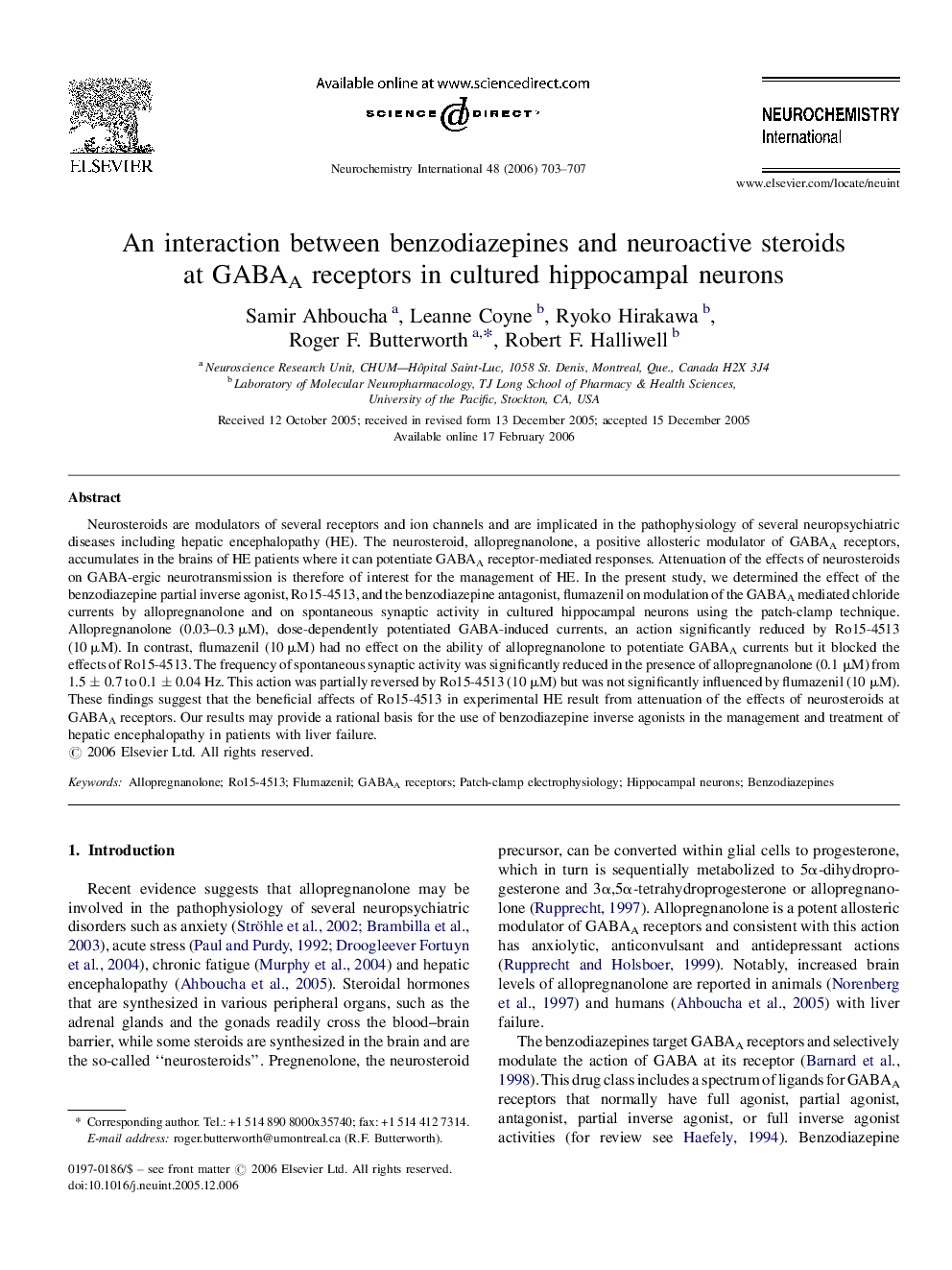| Article ID | Journal | Published Year | Pages | File Type |
|---|---|---|---|---|
| 2202315 | Neurochemistry International | 2006 | 5 Pages |
Neurosteroids are modulators of several receptors and ion channels and are implicated in the pathophysiology of several neuropsychiatric diseases including hepatic encephalopathy (HE). The neurosteroid, allopregnanolone, a positive allosteric modulator of GABAA receptors, accumulates in the brains of HE patients where it can potentiate GABAA receptor-mediated responses. Attenuation of the effects of neurosteroids on GABA-ergic neurotransmission is therefore of interest for the management of HE. In the present study, we determined the effect of the benzodiazepine partial inverse agonist, Ro15-4513, and the benzodiazepine antagonist, flumazenil on modulation of the GABAA mediated chloride currents by allopregnanolone and on spontaneous synaptic activity in cultured hippocampal neurons using the patch-clamp technique. Allopregnanolone (0.03–0.3 μM), dose-dependently potentiated GABA-induced currents, an action significantly reduced by Ro15-4513 (10 μM). In contrast, flumazenil (10 μM) had no effect on the ability of allopregnanolone to potentiate GABAA currents but it blocked the effects of Ro15-4513. The frequency of spontaneous synaptic activity was significantly reduced in the presence of allopregnanolone (0.1 μM) from 1.5 ± 0.7 to 0.1 ± 0.04 Hz. This action was partially reversed by Ro15-4513 (10 μM) but was not significantly influenced by flumazenil (10 μM). These findings suggest that the beneficial affects of Ro15-4513 in experimental HE result from attenuation of the effects of neurosteroids at GABAA receptors. Our results may provide a rational basis for the use of benzodiazepine inverse agonists in the management and treatment of hepatic encephalopathy in patients with liver failure.
